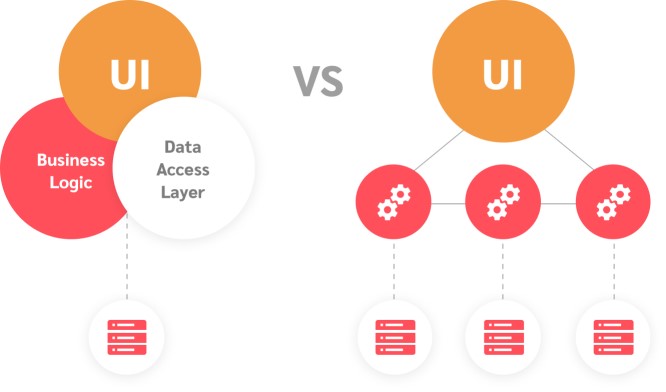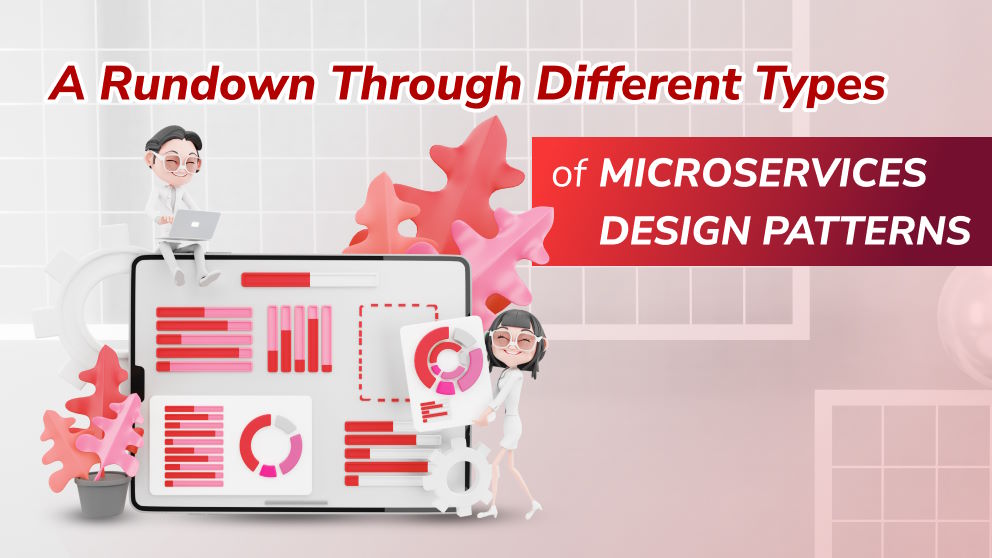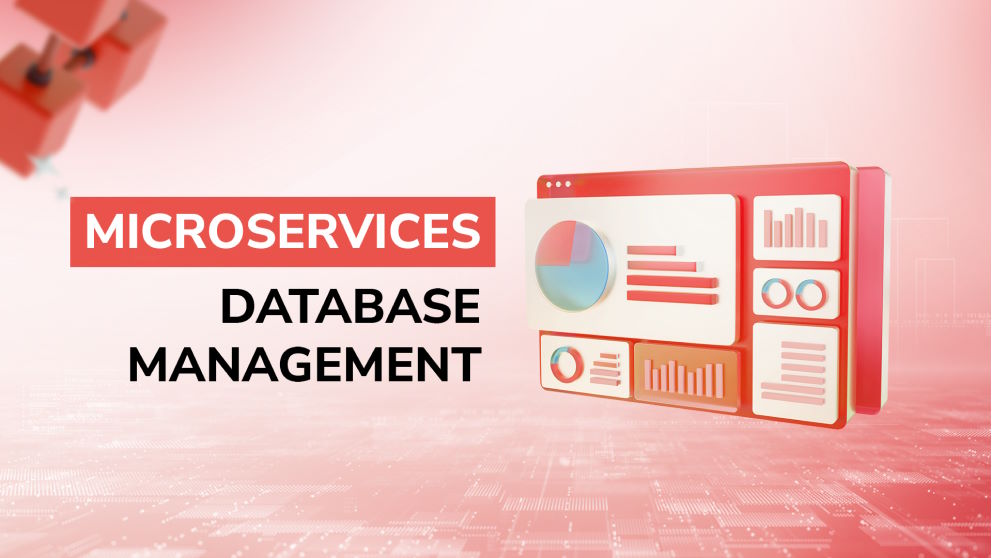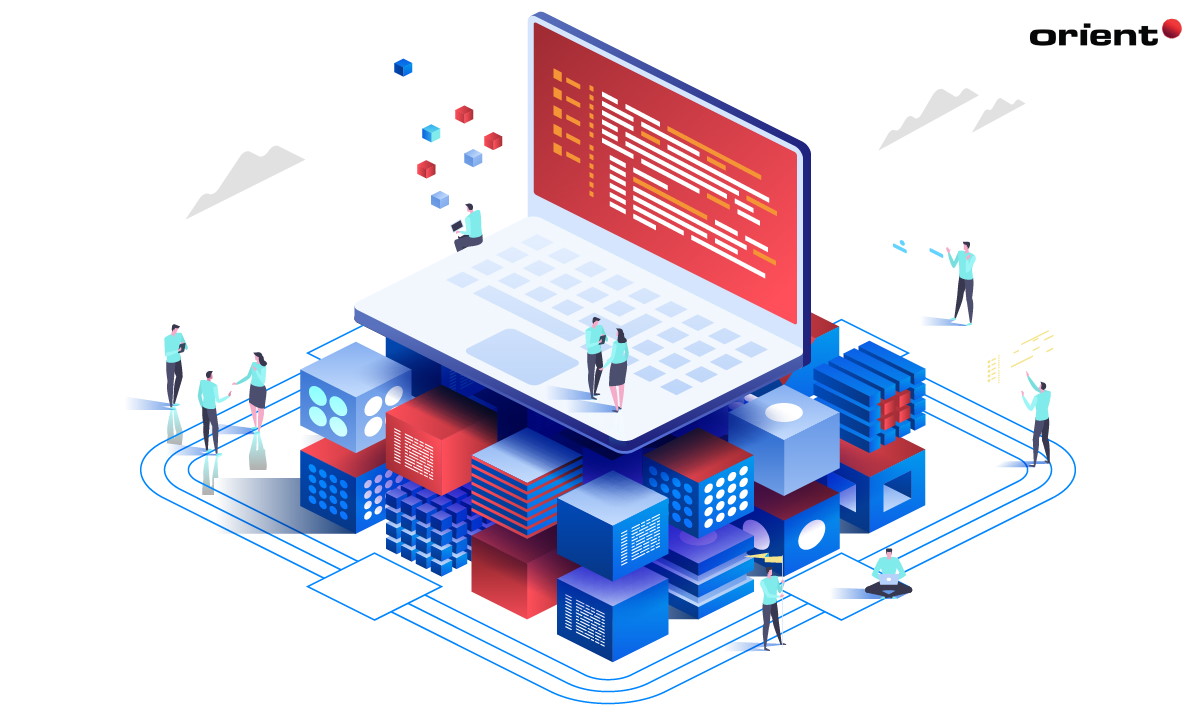Monolithic Architecture Vs. Microservices: An Overall Comparison

Content Map
More chaptersThe traditional way of developing software is often referred to as monolithic software architecture. This is because a single, monolithic codebase was used to create an application. This monolithic approach to software development has served companies well for many years. However, the drawbacks to the monolithic architecture get more prominent as an application matures. For example, it was hard to manage software complexity, and tight coupling between components often made applications challenging to maintain.
Microservices were introduced to the world as the antidote to the monoliths. The microservice architecture tried to solve the problems created by the monolithic approach by decomposing applications into smaller, independent, and loosely coupled services. Each one runs in its process and communicates using lightweight mechanisms, such as message brokers.
Challenges with Monolithic Architecture
As monolithic applications grow in size, the software development challenges posed by monolithic architecture will become more visible. It is hard to create loosely coupled components in a monolithic architecture. Every component needs to know about other parts of the system, which poses challenges when making changes.
Some of these challenges include:
Difficult to Maintain
As application grows more complex over time, they become hard to maintain and evolve. It is not easy to make changes to monoliths, as any change can affect other modules or components of an application. This leads to monoliths becoming the "problem child" over time, with developers losing interest in making changes. Software maintenance burden increases as monoliths grow in size and complexity.
Difficulty Adding New Features
A monolithic architecture is difficult to extend with new features. This is because new features are tightly coupled to the existing ones. Thus, changing a current feature might break other features, making it impossible to add new code without incurring a high risk of making mistakes.
Single Point of Failure
The monolithic architecture is a single point of failure. If one module or service stops working, it can take down the whole application. This is due to the tight coupling of components. The high dependencies between components can be described as spaghetti, where components are entangled with one another. Thus, if one part fails, there will be a cascading effect when the next component tries to communicate with the failing component.
Scaling Monolithic Applications Can Be Costly
Scaling monolithic applications is expensive and can prove to be a bottleneck in your business. As your user base scales and the traffic load becomes more demanding, you will need to increase capacity to match the increasing demands. Therefore, scaling monoliths (for example, adding more memory and CPUs) comes at a high cost. Also, you need to spend a lot of time to ensure that scaling is done in a way that adds capacity without affecting the existing components.
Microservices Architecture To The Rescue
Microservice architecture came up as the solution for these monolithic problems by decomposing monoliths into smaller services. Since the monolith was split into smaller services, it became easier to manage modularity. Each service can be scaled independently. The small size of services also makes them easier to understand and maintain.
What is a Microservices Architecture?
Microservices is a service-oriented architecture design pattern that structures an application as a collection of loosely coupled services. Microservices have emerged as a popular architecture design pattern for developing modern applications.
A microservices-based application is a distributed system where complex applications are composed of simple, independent processes communicating with each other using language-agnostic communication mechanisms such as REST APIs or messaging.
Benefits of Microservices Architecture
Some of the benefits that you get from decomposing your monolith into smaller, logical units include:
Independent Deployment
Microservices are small, independent pieces of software that can be deployed independently from other services. This brings agility and ease into the equation because it becomes much easier to roll out new features or fix bugs with microservice applications than monolithic ones.
Better Scalability
The microservice architecture enables the ability to scale services of an application independently. This is a big deal because you can optimize costs by scaling out only those services that need scaling and leaving other parts of your system alone to avoid additional charges.
Improved Fault Tolerance
Since each service runs in its process space (or container), they are shielded from failures of other services. This also improves fault tolerance because if a single service is acting up or goes down, then only that particular service will be affected instead of the whole system, as in the case of monoliths.
Better maintainability
Because services are developed in isolation from one another, they are easier to manage. It also becomes much easier to identify vulnerabilities at the service level instead of monolithic applications.
Improved Resilience to Changes
When we have small independent services, we can easily change one without breaking the complex system and needing to do a significant rollback, as in the case of monoliths. This is because if you need to implement a new feature or fix a bug on an existing feature, you don’t have to worry about the whole system breaking or being taken down. Instead, you can just change that particular service’s behavior all by itself without affecting other services
How to Handle Business Logic in Microservices Applications?
One of the most challenging aspects of creating a good microservices architecture is how to split the application into the right services. In a good microservices architecture, each service is loosely coupled. The coupling refers to the degree of dependency between services.
How to define the boundaries between each microservice?
Domain-driven design (DDD) has an important concept called bounded context. It’s essentially a way to split an application up into separate pieces based on the business logic. Sounds familiar? Bounded context is almost just another name for microservice, which was coined before microservices became a thing.
Domain-driven design methodology suggests having a lot of bounded contexts in large applications, which is also pretty much true when it comes to microservices architectures. So you can look at DDD as a tool or method that helps you identify what services your microservices application should have.
Cross-Cutting Concerns and Microservices
A cross-cutting concern is not related to any specific part or object of the microservices application. For example, authentication and authorization are two cross-cutting concerns that often get mixed up with business logic. Another example can be logging, which you need in all application layers, yet it doesn’t belong in any particular layer (e.g., business logic).
Cross-cutting concerns like logging, authentication, and authorization are not specific to any particular microservice. So having them in each service is not a good idea because it will make your services large and hard to maintain.
It’s better to use shared libraries that implement these concerns and then inject them into each service as a dependency via the constructor or any other injection mechanism.
When to use Microservices?
After learning about microservices, you may think that this architectural style is perfect for every single application out there. However, one thing to note about microservice architecture is that it can be expensive. It is costly for small software development teams. Imagine if you use microservices in a small project consisting of two people!
On the contrary, it can be a boon in large projects with many people working together. It allows them to work independently and have a lot of autonomy. In addition, Microservices architecture scales well when you have more than one team, so if your software development company has lots of engineers, they can divide the project into a few different parts and work together on them.
Here are some of the scenarios for when to use microservices:
The application will be developed for a long time
By any chance, your application will be worked on for several years, which means you need to make sure the architecture can quickly adapt to future changes. Microservices are an excellent choice for this. However, if you know that your application will be developed for only a few months or even weeks, this is not the right choice.
A large software development team is building the application
Building a microservices architecture is like building a city. First, you need to make sure that people can easily communicate and work together. Then, other teams with different skill sets can develop different microservices with clear boundaries.By this way, each team can focus on what they are good at, and you don’t need people with every skill to develop the application.
Complex Business Domain
Larger applications with the complex business domain are prime candidates for microservices. These types of applications have many user stories that touch multiple parts of the system. So, it becomes difficult to implement these features in a monolithic application because you need to coordinate between different services. Microservices provide an easy solution to this problem by abstracting each bounded context into separate services.
The ability to Scale the app is important
Since you can scale down or up to individual microservices without affecting other services or the monolith application, you can modify your system’s resource utilization as per your requirements. For example, this means that during peak hours, you can just scale up, and in slower periods, you could scale it back down again.
Low downtime is your top priority
Microservices help you achieve high availability and low downtime by allowing you to deploy individual services freely. A new version of the service can be released with no downtime and enable the traffic to shift onto it without breaking a sweat entirely.
When not to use Microservices?
As I mentioned earlier, not all applications are good candidates for microservices. Some of the scenarios where microservices don’t make sense are:
Existing Monolithic Applications
If you already have a monolithic application working as expected, don’t start refactoring it into microservices because someone said that that’s the way to go. Just like changing your UI framework now and then without having good reasons doesn’t make any sense, making architectural changes will only be disruptive and requires cost and time.
If you already have a well-established monolithic application and want to migrate it to microservices, you should take baby steps and not jump to migrating everything in one go. This will ensure that your existing application remains stable while you slowly move towards the end goal of decomposing your monolith into smaller microservices.
Simple Applications
As I said before, microservices are suitable for larger apps with complex business domains. However, even if your application remains small in terms of the codebase and the number of developers on the team, you could still benefit from a monolith architecture because it will be easier to manage.
The Application Won’t Be Long-Lived
Building a small application that isn’t expected to live for very long makes little sense in investing time and effort into developing microservices. It doesn’t provide much benefit,t especially when you have to take care of issues like data synchronization, consistency across services, etc.
Best Practices For Microservices
Following are some of the best practices that you should follow to make sure that your microservices architecture is scalable and maintainable:
Avoid tight coupling between services
Tightly coupled services refer to those services that interact with each other often. You should always try to design loosely coupled services to work independently of each other, which is why you should favor asynchronous communication whenever possible.
Avoid synchronous communication between services
You should avoid making synchronous calls between services. This will mean that a single request from one service will cause other services to get blocked until the response is received. To avoid this, you need to ensure that all communication happens asynchronously by using queues or events/topics.
Use Cloud-Native Components
Every cloud-native application should be able to take advantage of the cloud’s elasticity, redundancy, and scalability. For microservices applications, this means using containers such as Docker and Kubernetes. Containers offer several benefits, including portability, ease of deployability, the ability to scale up or down quickly based on demand.
Make a Distinction Between Data and State
Since you have a lot of different microservices, there will be a lot of shared data. You can’t avoid it because, just like shared libraries and objects in your monolithic application, the services will also need access to shared data.
In such cases where multiple services depend on the same data or you have an extensive monolithic application with a lot of data, you should try to limit the number of services that access or mutate data so they can be isolated from each other.
In most cases, microservices have their databases and use event sourcing to communicate changes across services. This way, any particular service can only access its version of the state and doesn’t need to worry about whether another service has the latest version of the data.
Continuous Delivery
If you are already following continuous integration and deployment, you no longer have to worry about building and deploying your microservices. Instead, it will be automatically built whenever new commits are pushed into the source repository and deployed on your cloud platform. This ensures that every change is instantly available for testing or deployment without requiring manual intervention.
Logging and Monitoring
You have a lot of services to take care of, so you should invest in an automated logging and monitoring solution. Without it, you will not track down problems when they arise, primarily if your team members work on different services.
You should also have a centralized dashboard that you can use for viewing the status of all microservices. Distributed tracing and reporting tools like Prometheus and Grafana will help you better understand what your microservices are doing.
Developer Productivity
Which solution is better for developer productivity - microservices vs. monoliths? It depends on your team and the size of the application itself. In most cases, microservices tend to be less productive in the beginning because you need to learn a lot of new technologies for development, deployment, maintenance, etc.
However, in the long run, microservices architecture will yield better productivity if done right. Also, the use of cloud-native components will significantly improve your productivity.
Conclusion

The microservices architecture is undoubtedly winning over the hearts of developers because it offers the features that promote agility, scalability, and flexibility. It’s also easy to manage since you can break down your application into small pieces so each one can be deployed independently.
When choosing between microservices vs. monoliths, think about your priorities because there is no one-size-fits-all solution. If you are seeking a modern architecture that will allow you to scale up, go with microservices quickly. However, monoliths might be a better choice if you need maximum developer productivity and eliminate the need to manage infrastructure issues.







